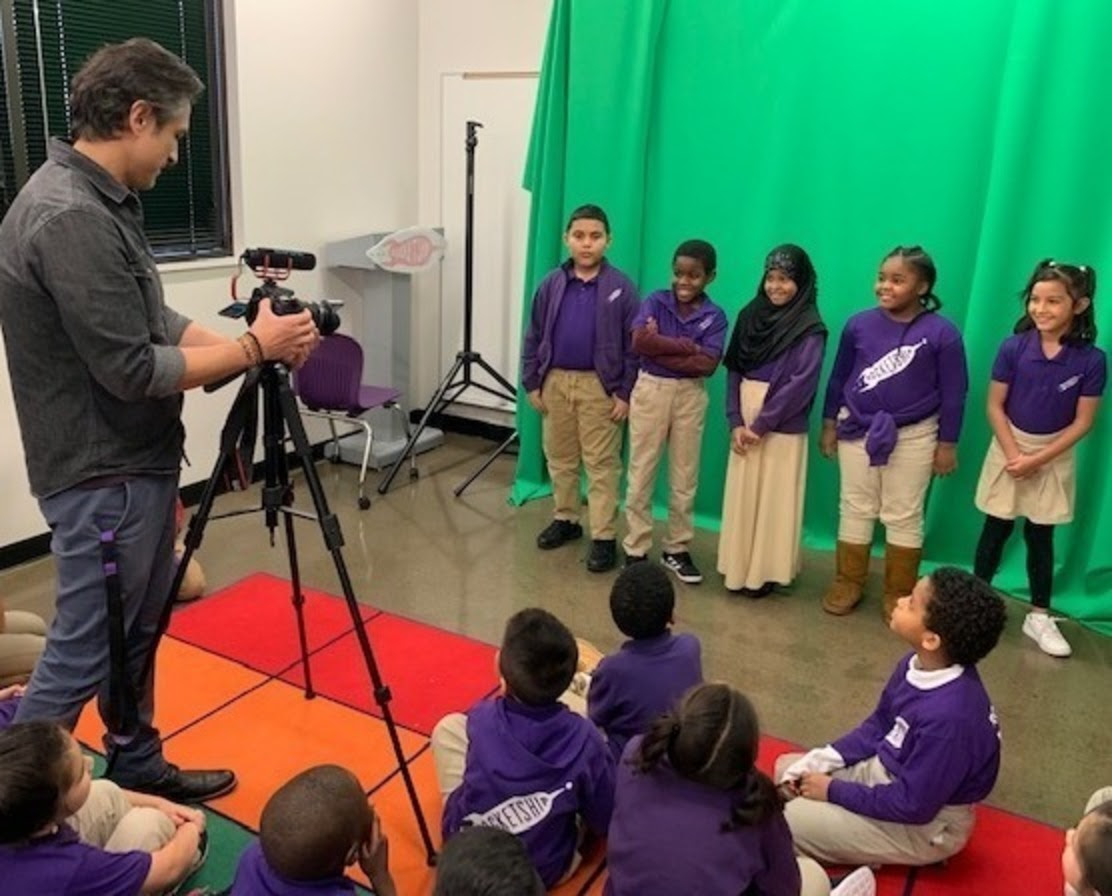
Teaching Fact From Fiction: Inside a Nashville Elementary School’s Media Literacy Program | Opinion
by Rene Millan, Theatre Arts and Media Literacy Coach, Rocketship United Academy.
This post originally appeared in The Tennessean on January 11, 2019.
Students are bombarded by all types of media on a daily basis. One study estimates that the average elementary-age student is exposed to over 40,000 media messages each year.
To help our students be better information consumers and content creators, it’s vital that we help them learn how to sort these messages into opinion and fact.
At Rocketship United Academy in south Nashville, I have been given the opportunity to design and implement curriculum for a media literacy study. We launched it last year.
Now, all of our students in kindergarten through fourth grade participate in the class each week as part of our school’s enrichment program.
I bring to the classroom a different type of background. I’m an actor by training. I’ve appeared on Broadway and in various television shows, including “24,” “CSI: Miami,” “Arrested Development” and “Days of Our Lives.”
I’ve never worked on the news side of media — only in entertainment. But the line between news and entertainment, between fact and fiction gets fuzzier every day. Our media literacy program is designed to help students unblur these lines and learn how to use media wisely.
Let’s be honest—separating opinion and fact in today’s media environment can be difficult even for adults. So how do we make these concepts accessible to young students?
At Rocketship, we decided to take a project-based learning approach.
Last spring, students worked for several weeks to produce news stories of their own. They interviewed different staff in the building on topics that were curious to them like late school buses and why some parts of the building are warmer than others.
Our principal even held a news conference to let them ask questions.
Throughout the semester, we weaved in lessons about the role of journalists in society — how we rely on them to get information we need or are curious about. We talked about source credibility and what it means to be biased.
Just as the phrase “fake news” began to appear regularly in the public dialogue, we were diving in as a school to help our students understand what news stories are, where they come from and how to judge their content.
There are many educational benefits from learning to be a discerning consumer of news. But perhaps most importantly, it gives our students real-life practice with developing their critical thinking skills.
It gives them permission to develop a healthy level of skepticism and ask inquisitive questions. And later, in the upper grades of elementary school, when they start writing their own nonfiction texts, the concepts of source and perspective are already familiar to them.
Last year, our first semester of media literacy was topped off with a visit by a veteran journalist, Anne Holt, who spent 40 years as a news anchor for WKRN-News 2 here in Nashville. She answered students’ questions and told them how she found a career in journalism. For her, it started with a love of reading and learning new information.
Rocketship United is a diverse school and most of our students are economically disadvantaged. Anne’s visit left a lasting impact. It gave our students the opportunity to see themselves in that same type of important profession later in life.
It’s a gift when media literacy can be a standalone class. But it doesn’t have to be. This can be taught by any teacher or any parent. And I hope you will.
Learn more about starting a career at Rocketship or enrolling your child.
René Millán is a theatre arts and media literacy coach at Rocketship United Academy, a public charter school in south Nashville that serves students in grades K-4.
Published on March 8, 2019
Read more stories about: Personalized Learning.


